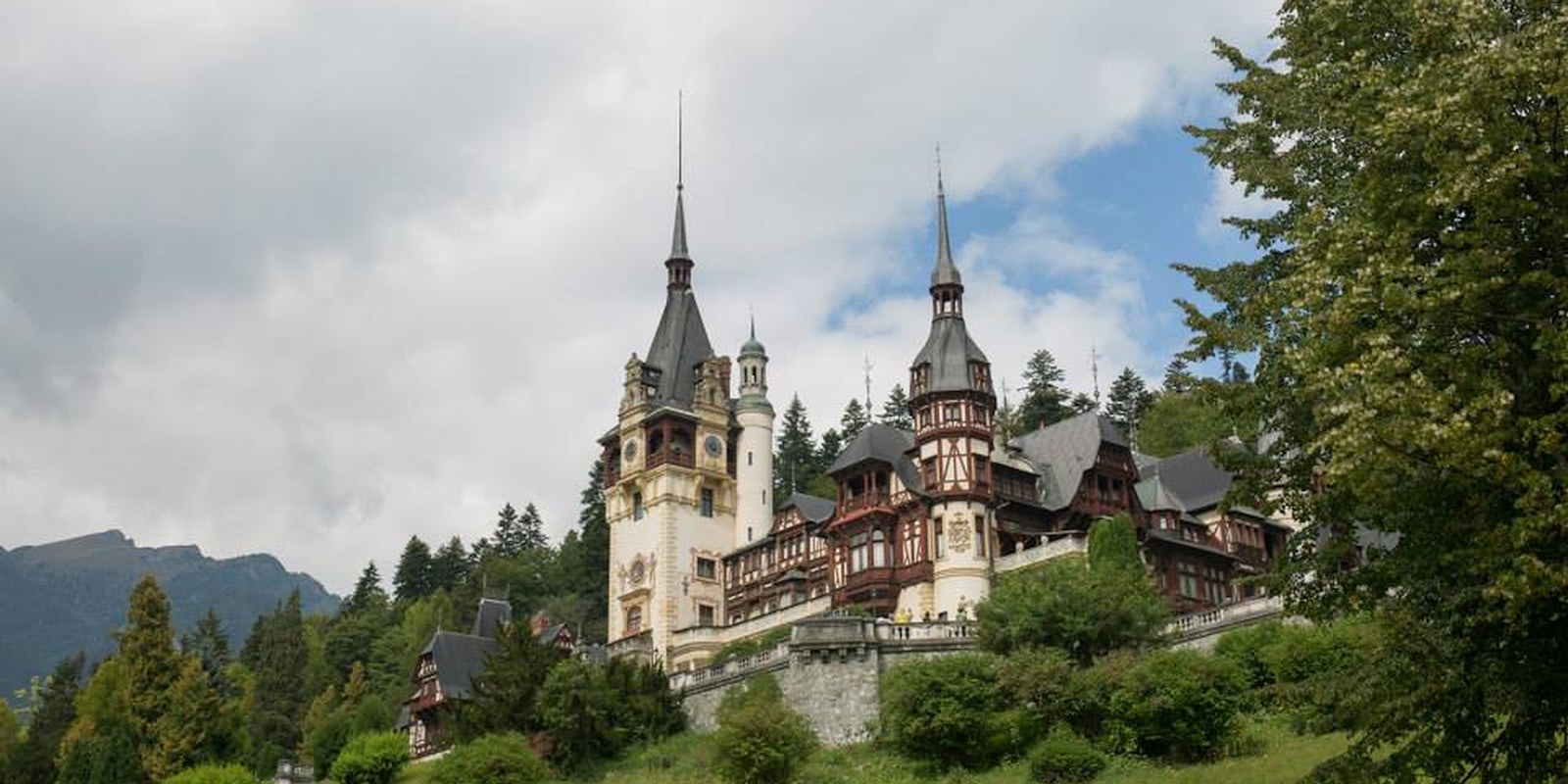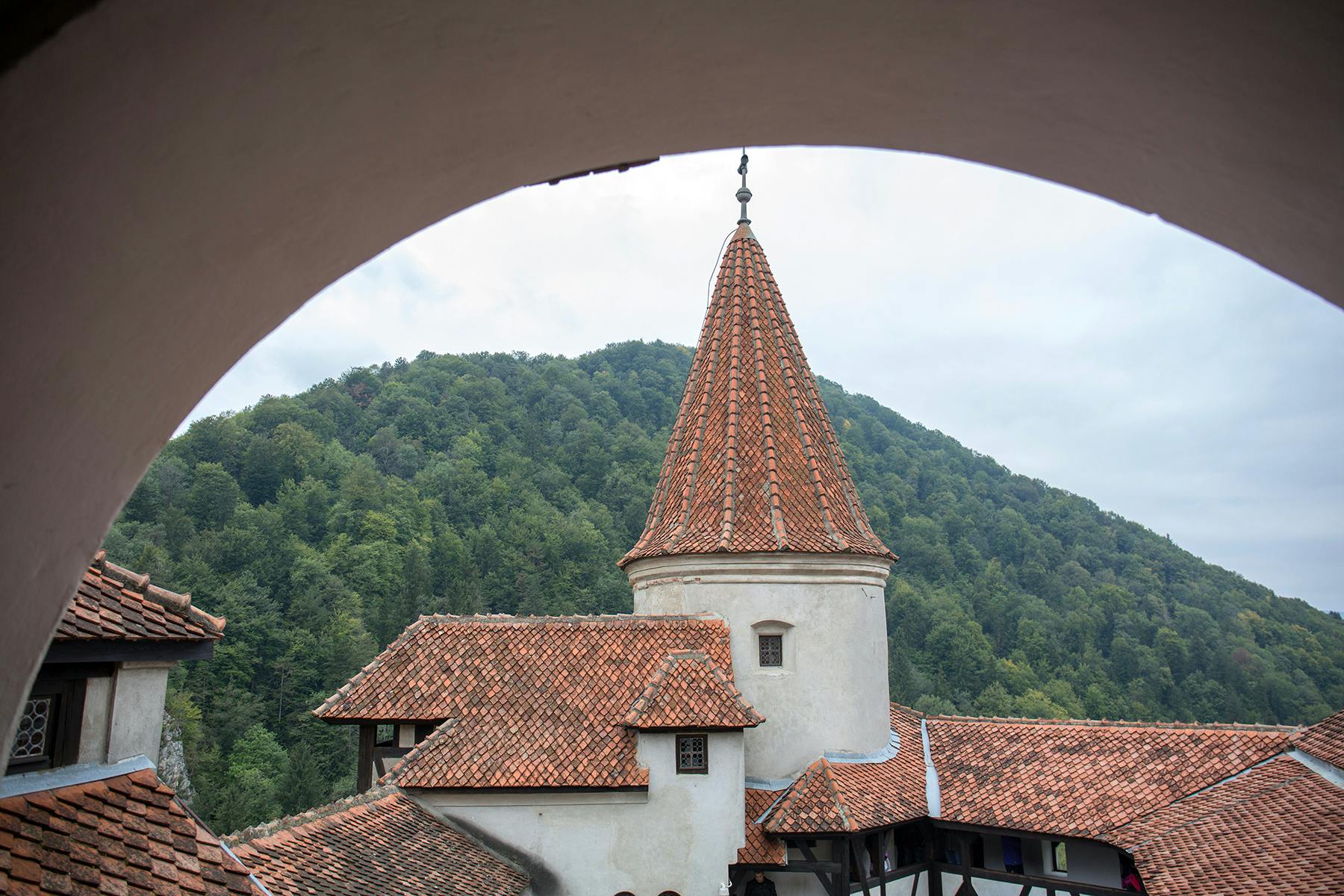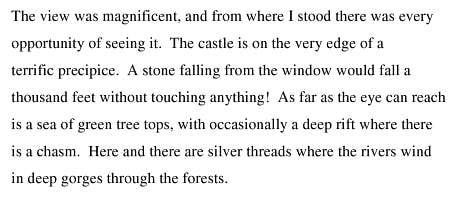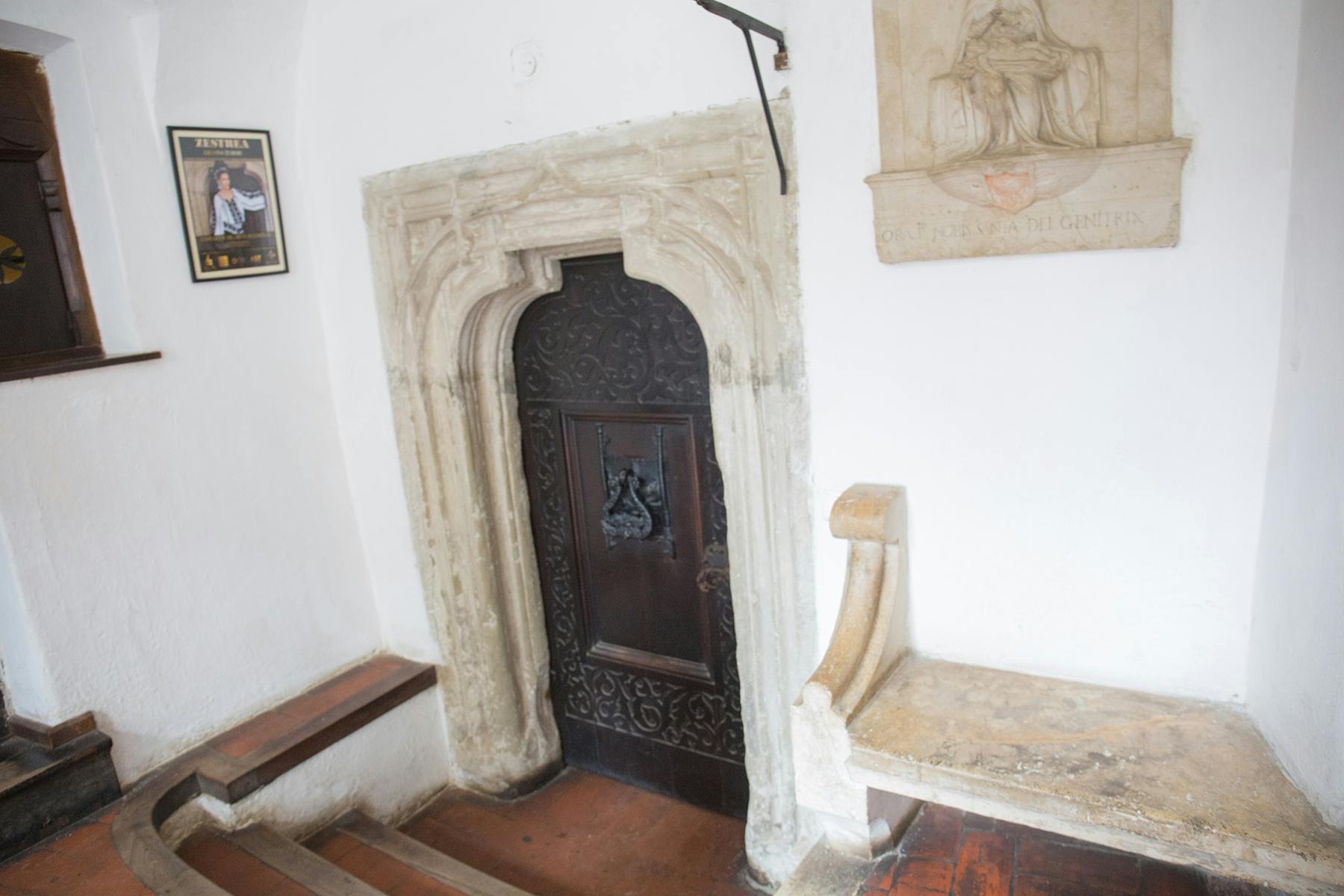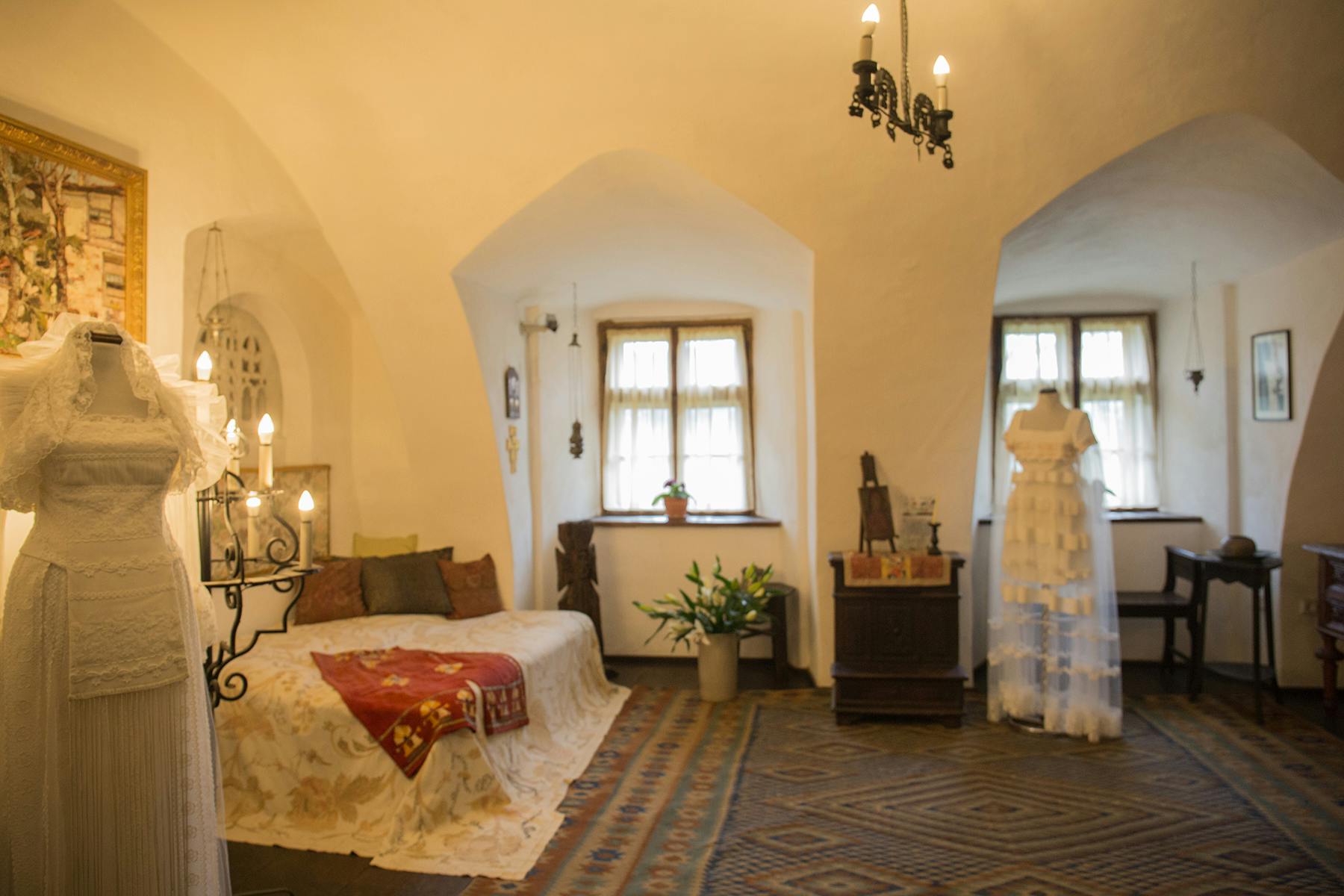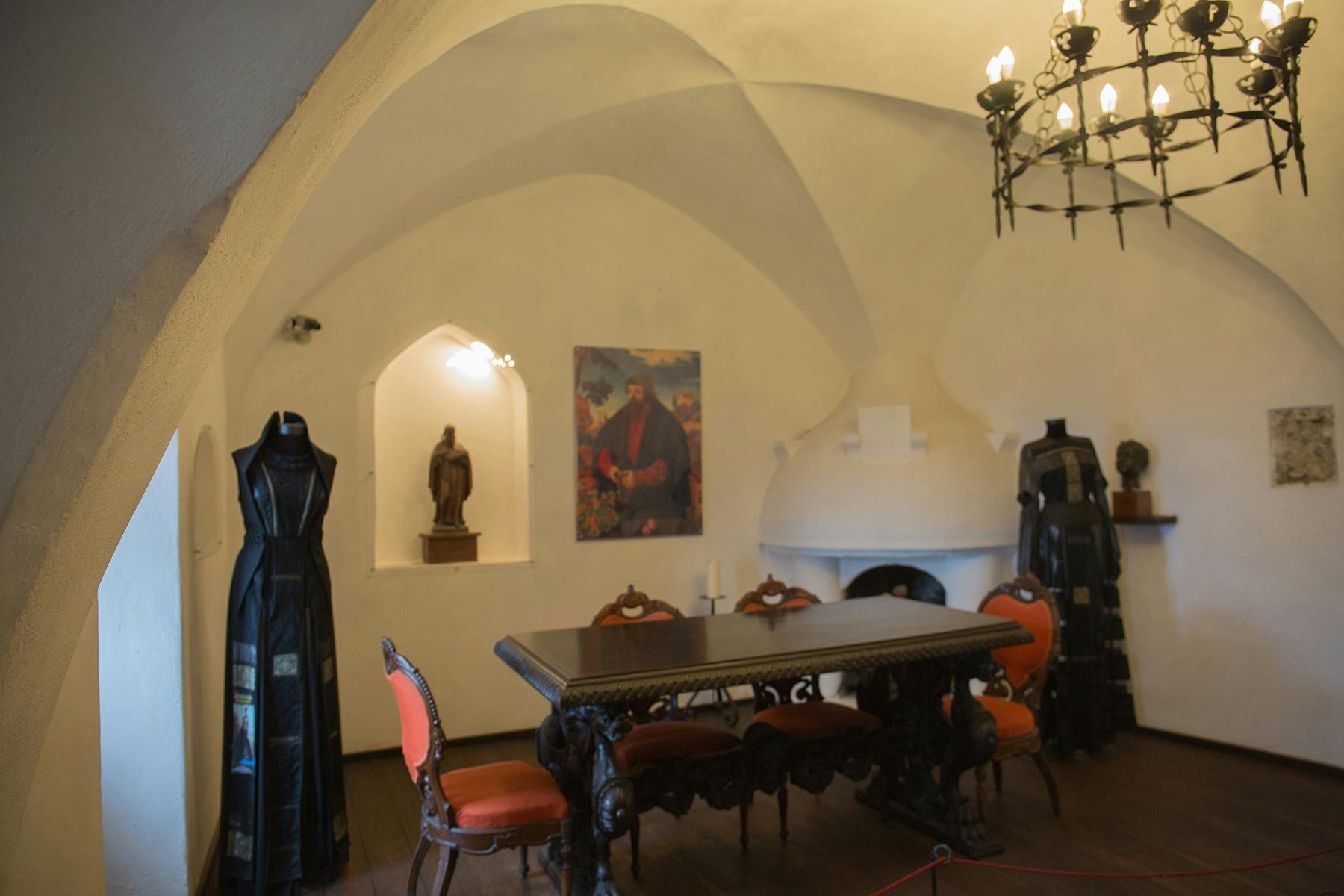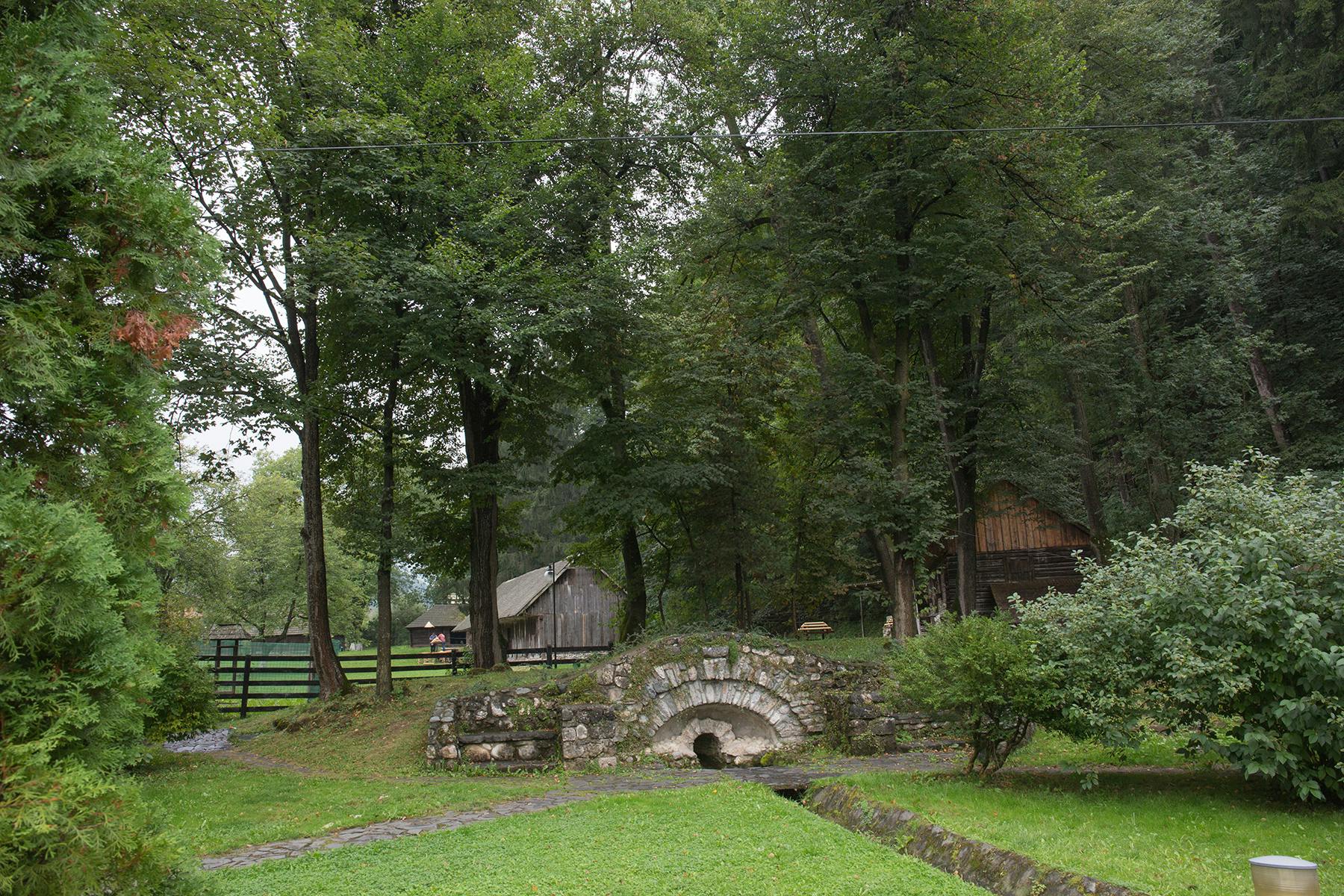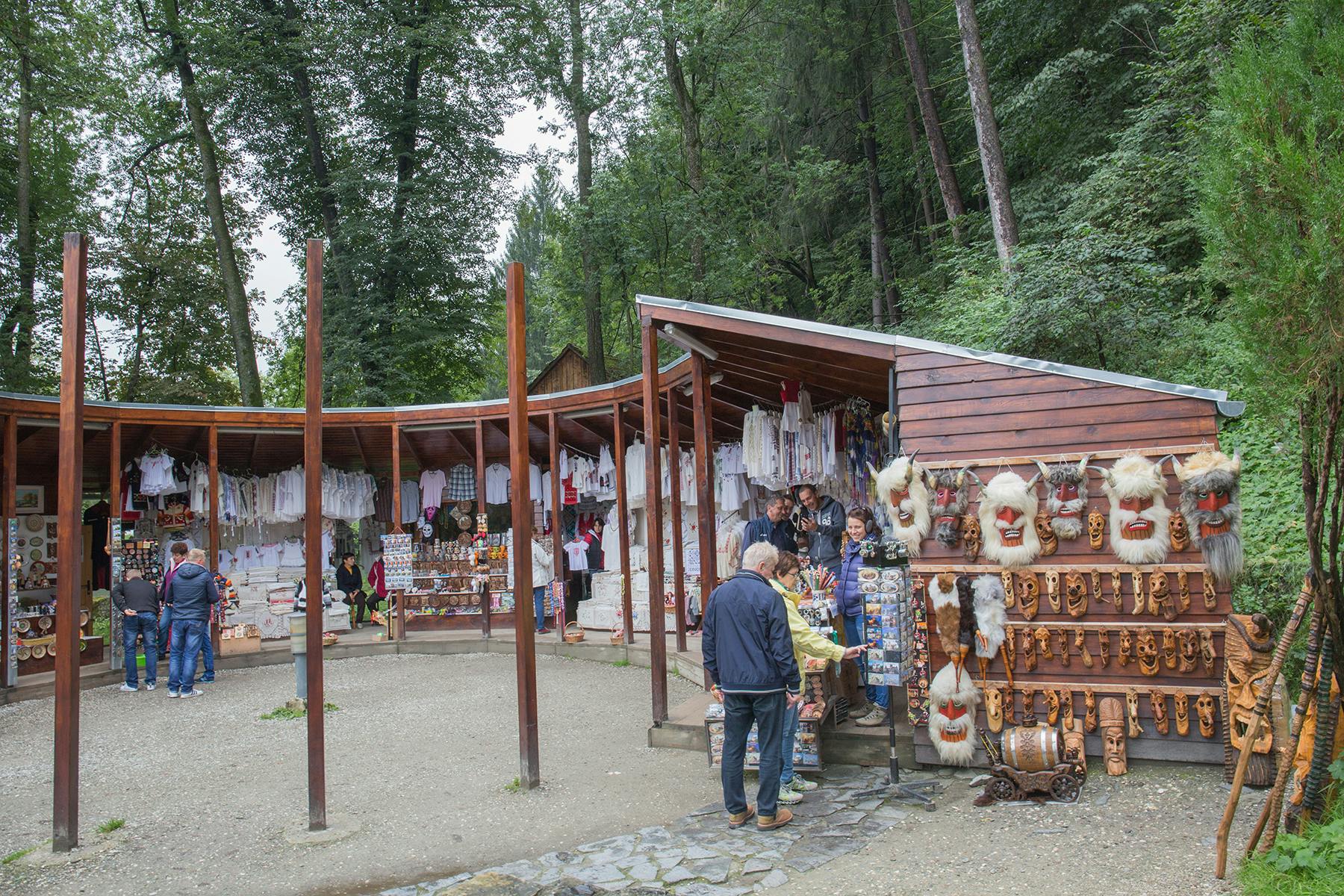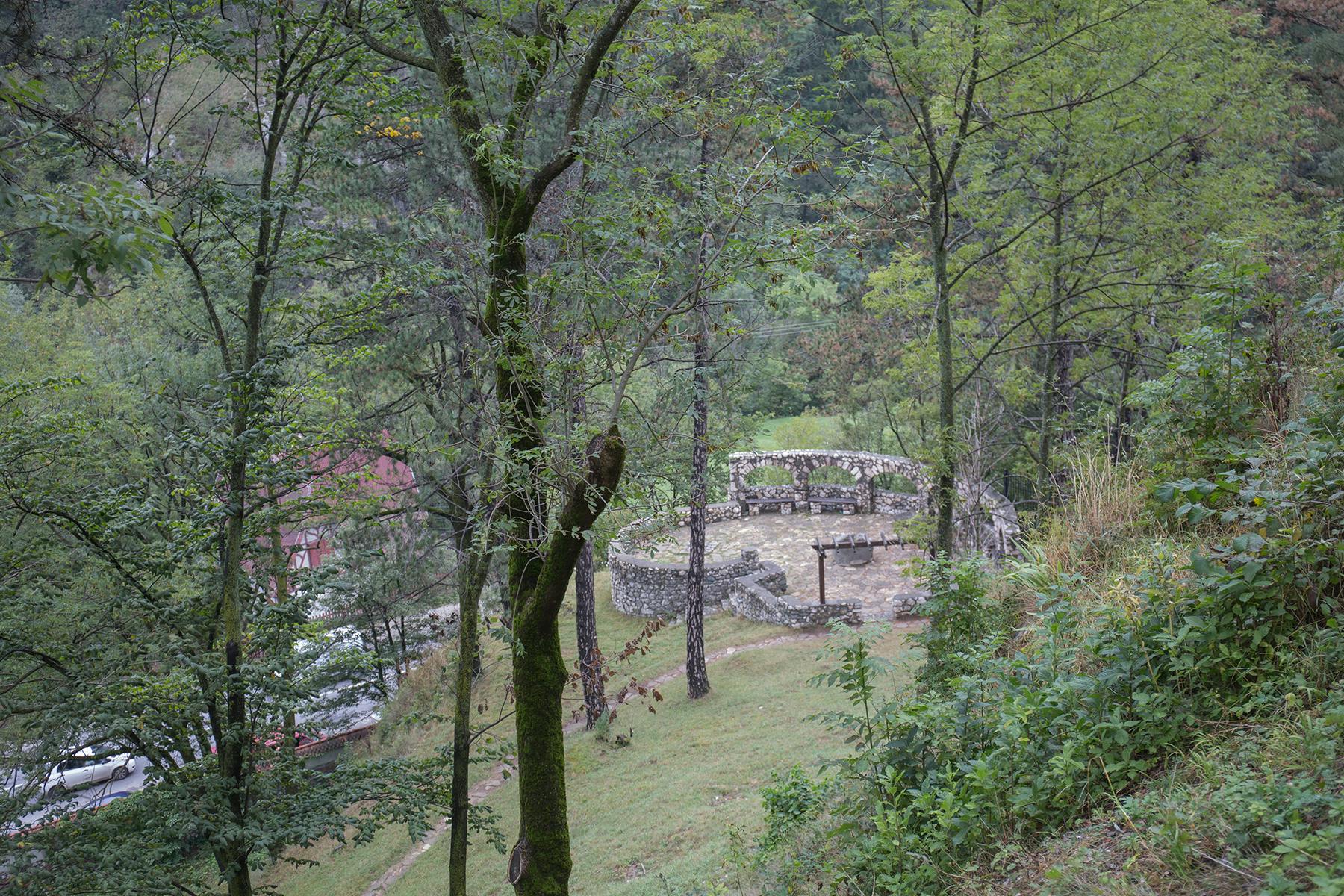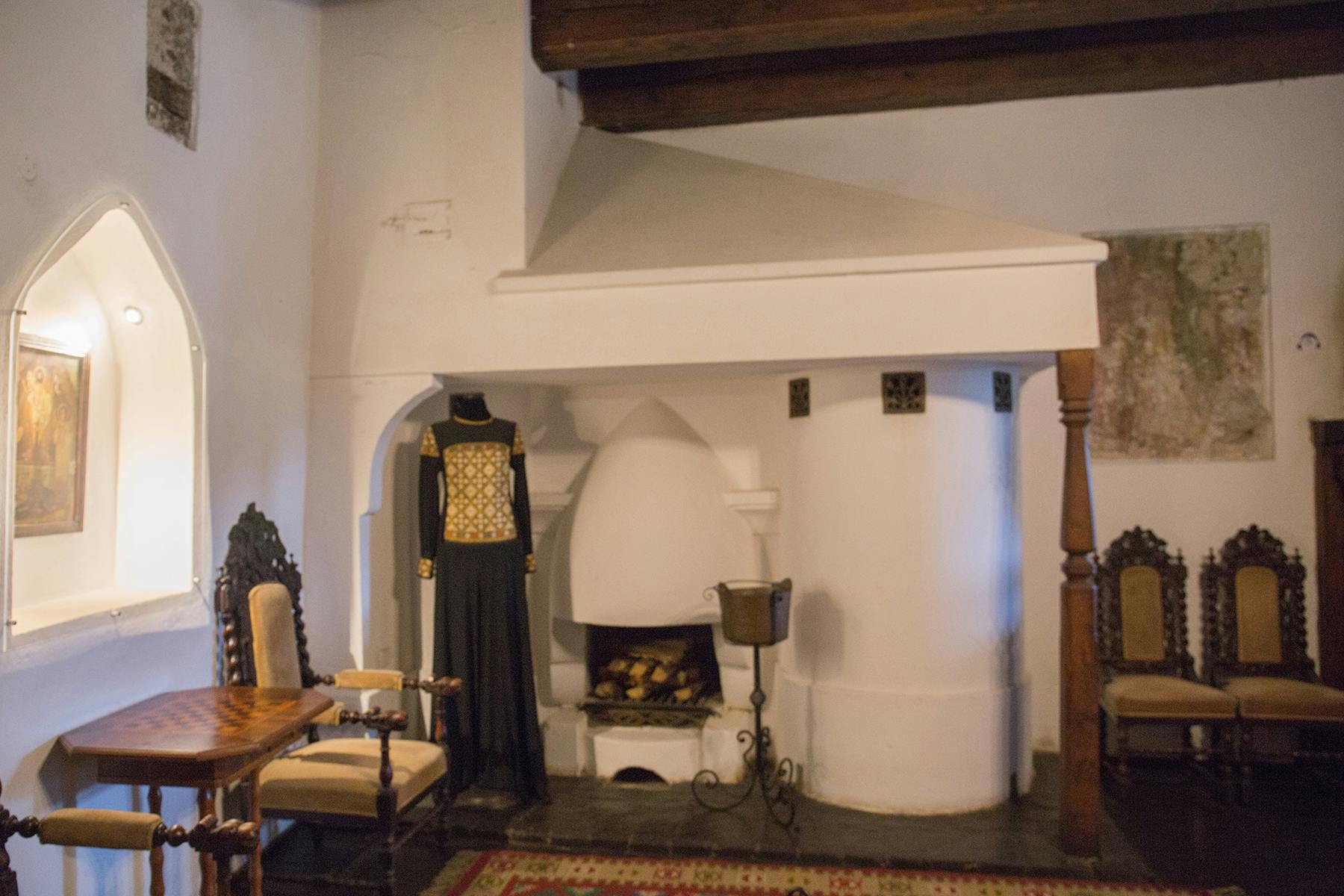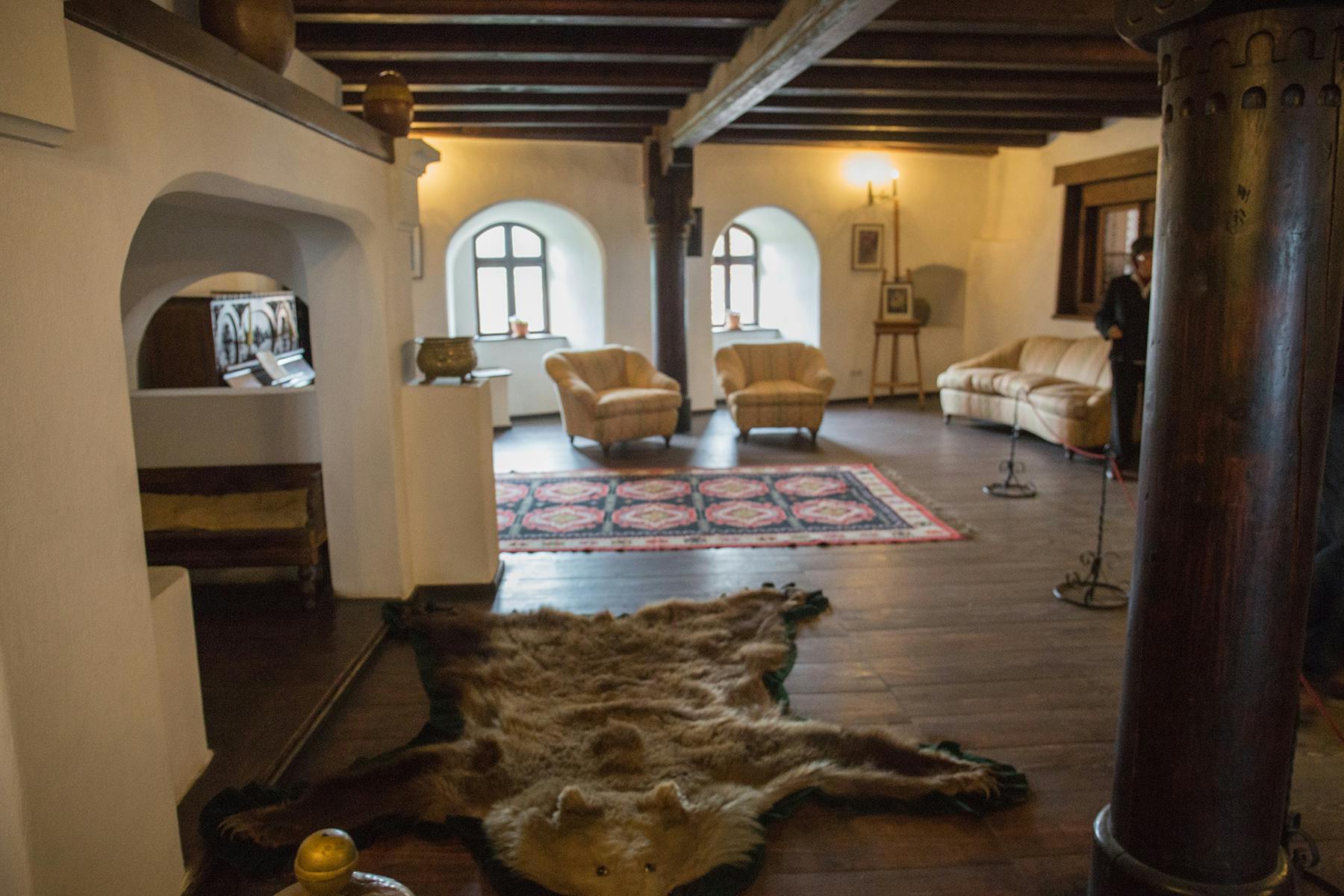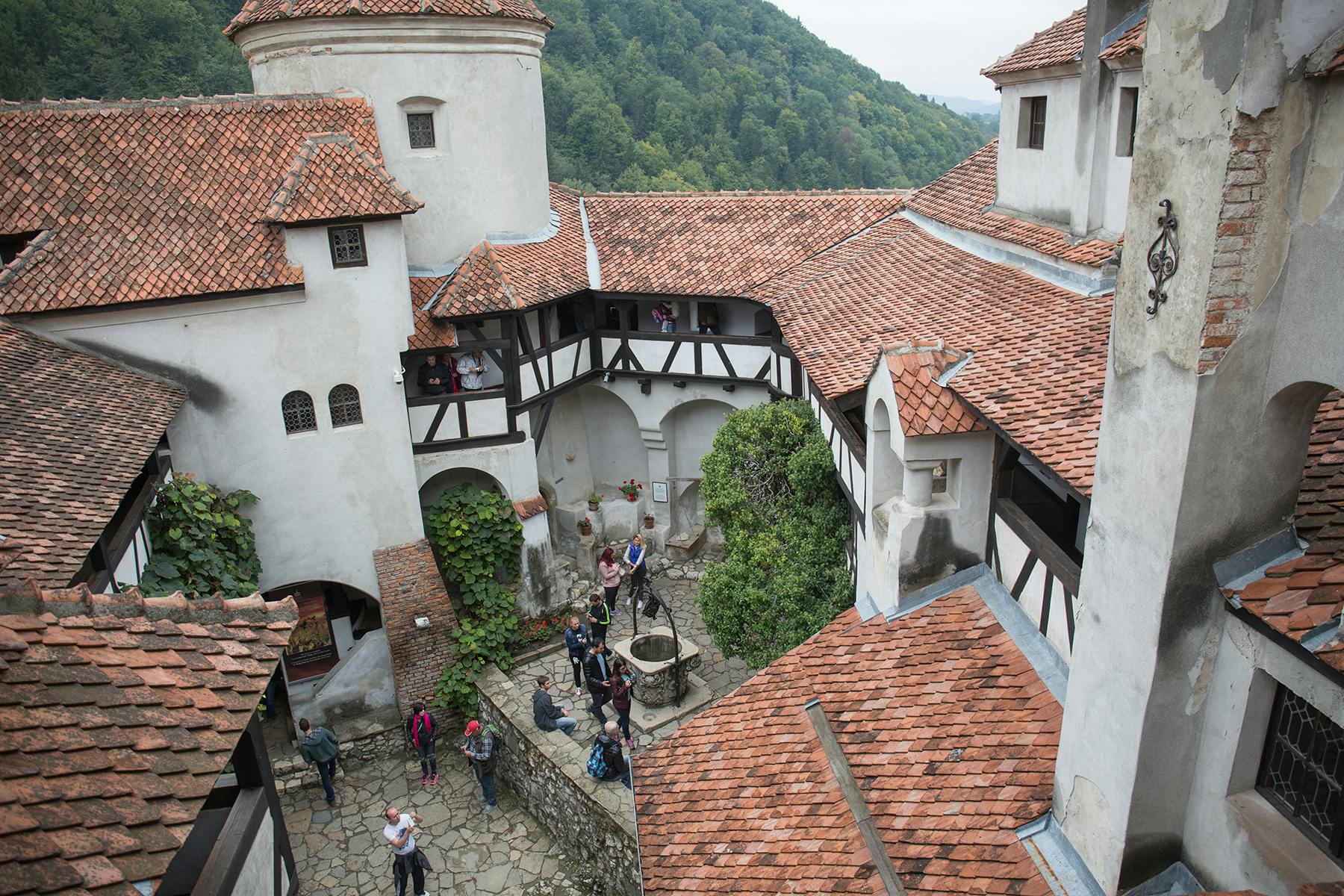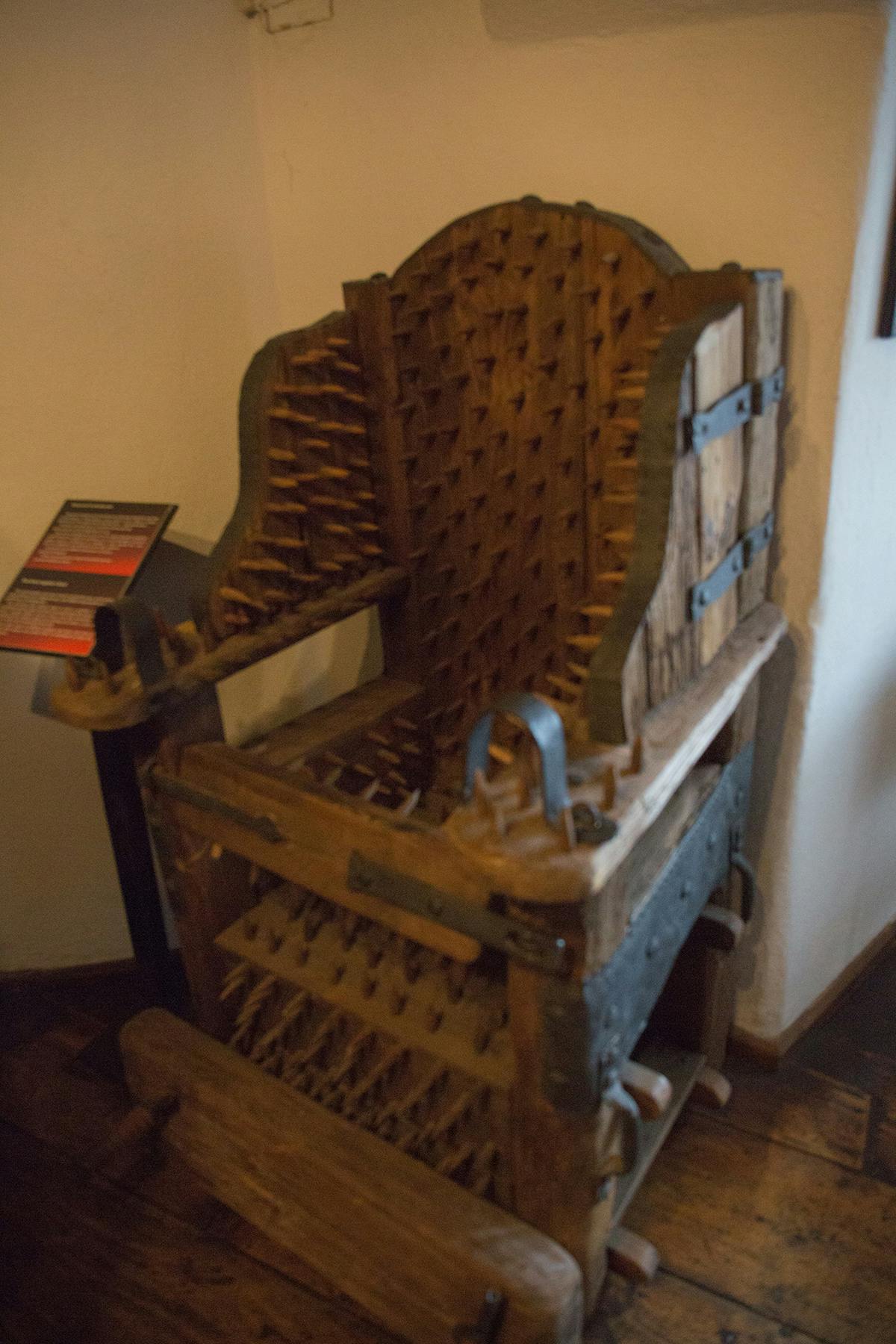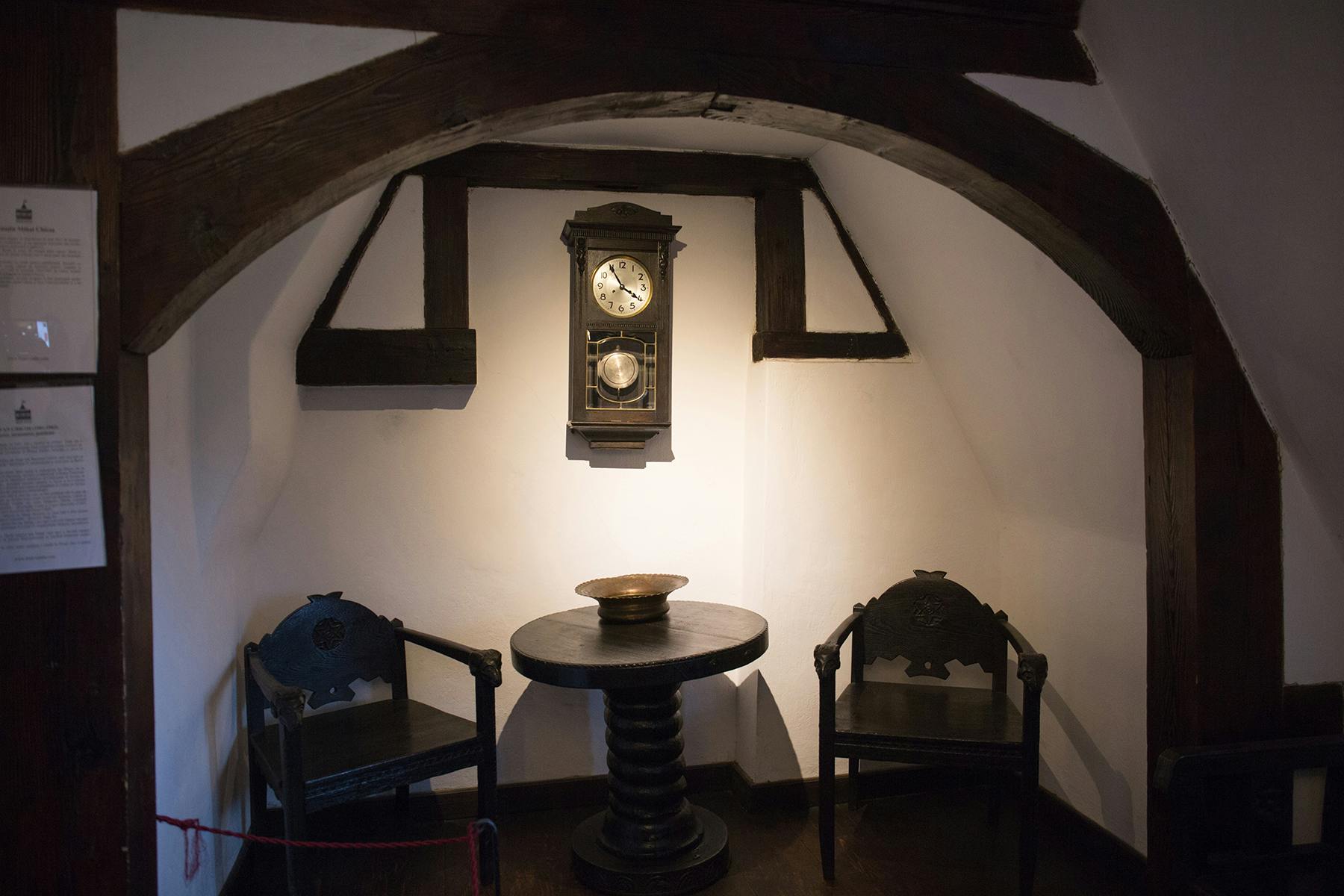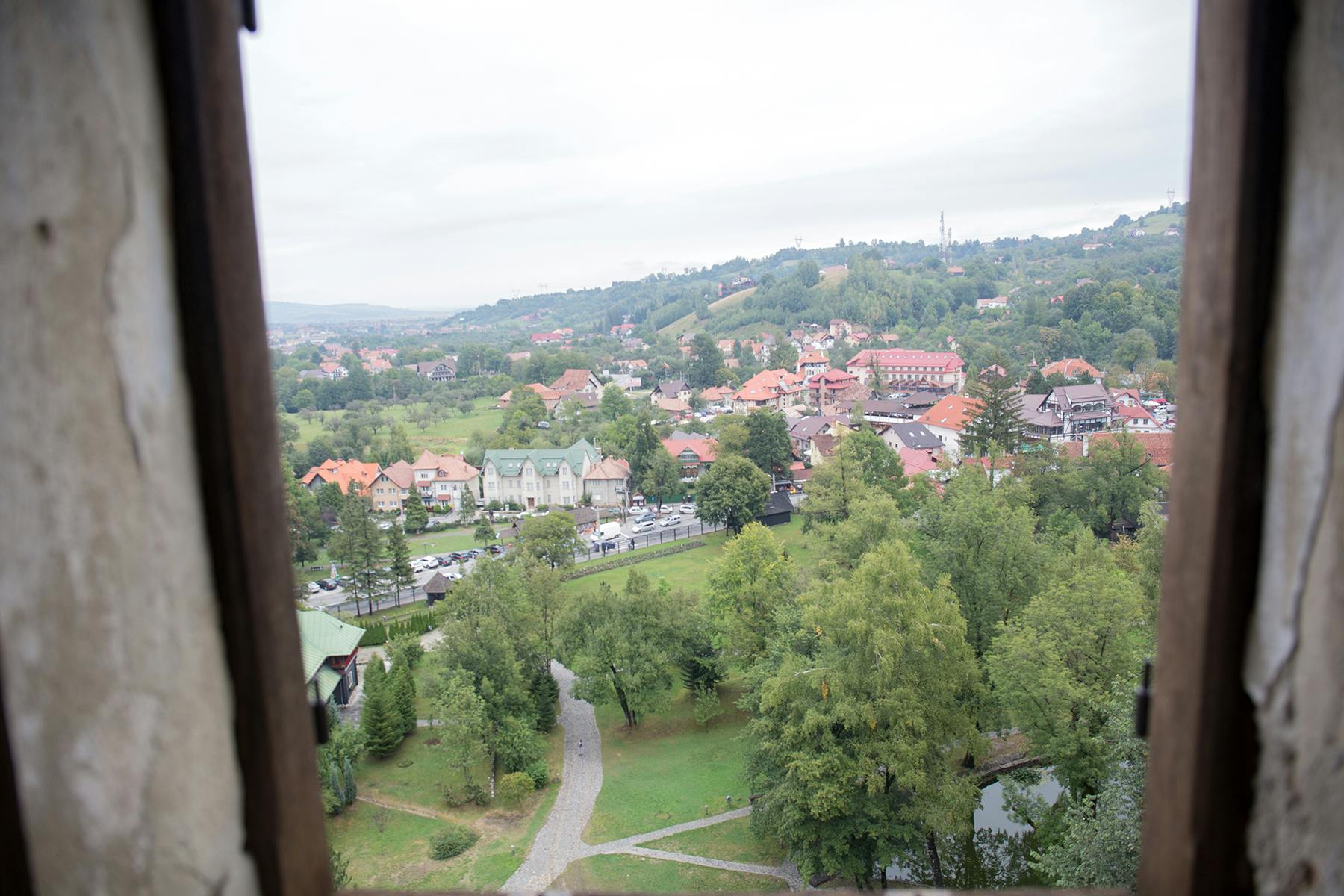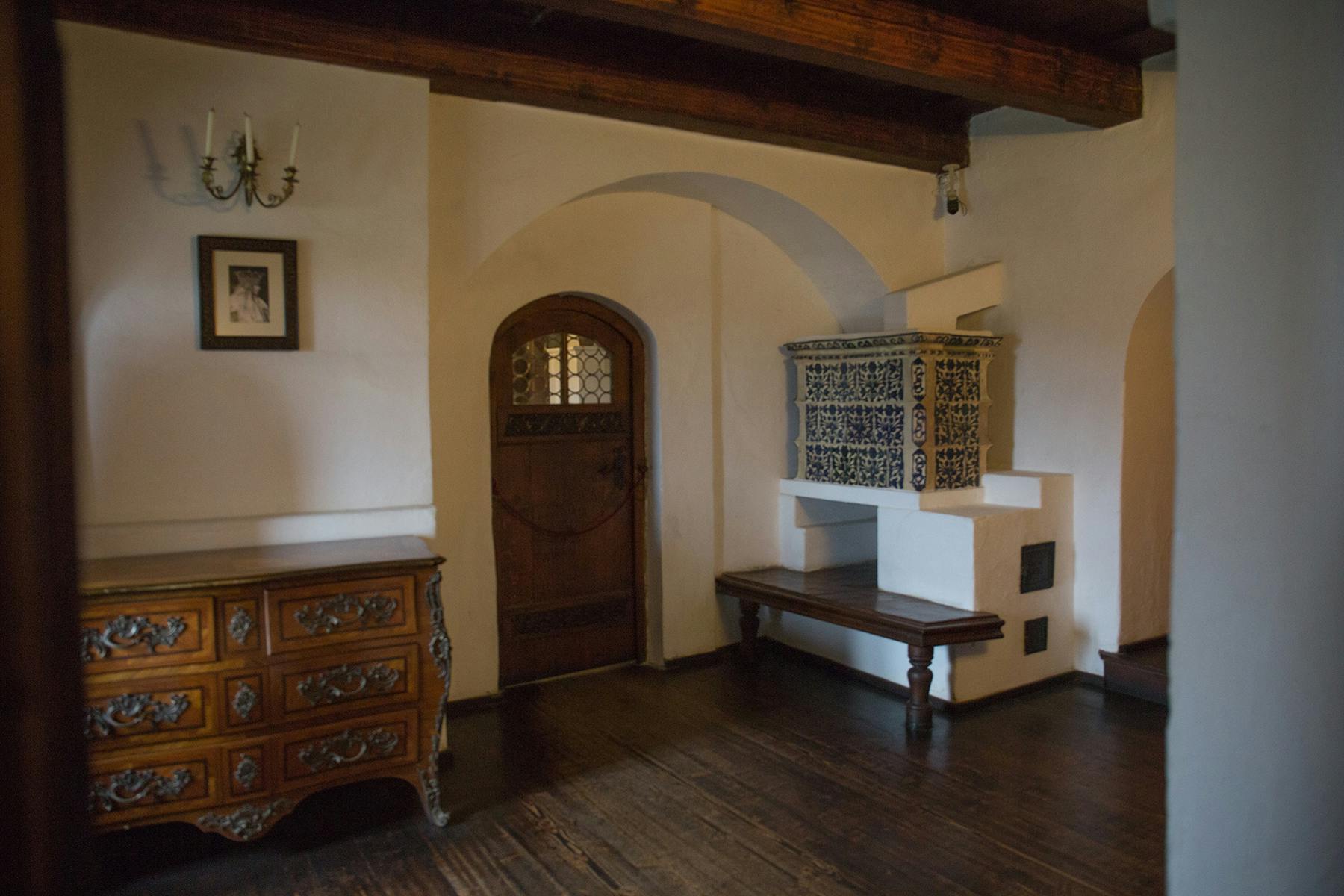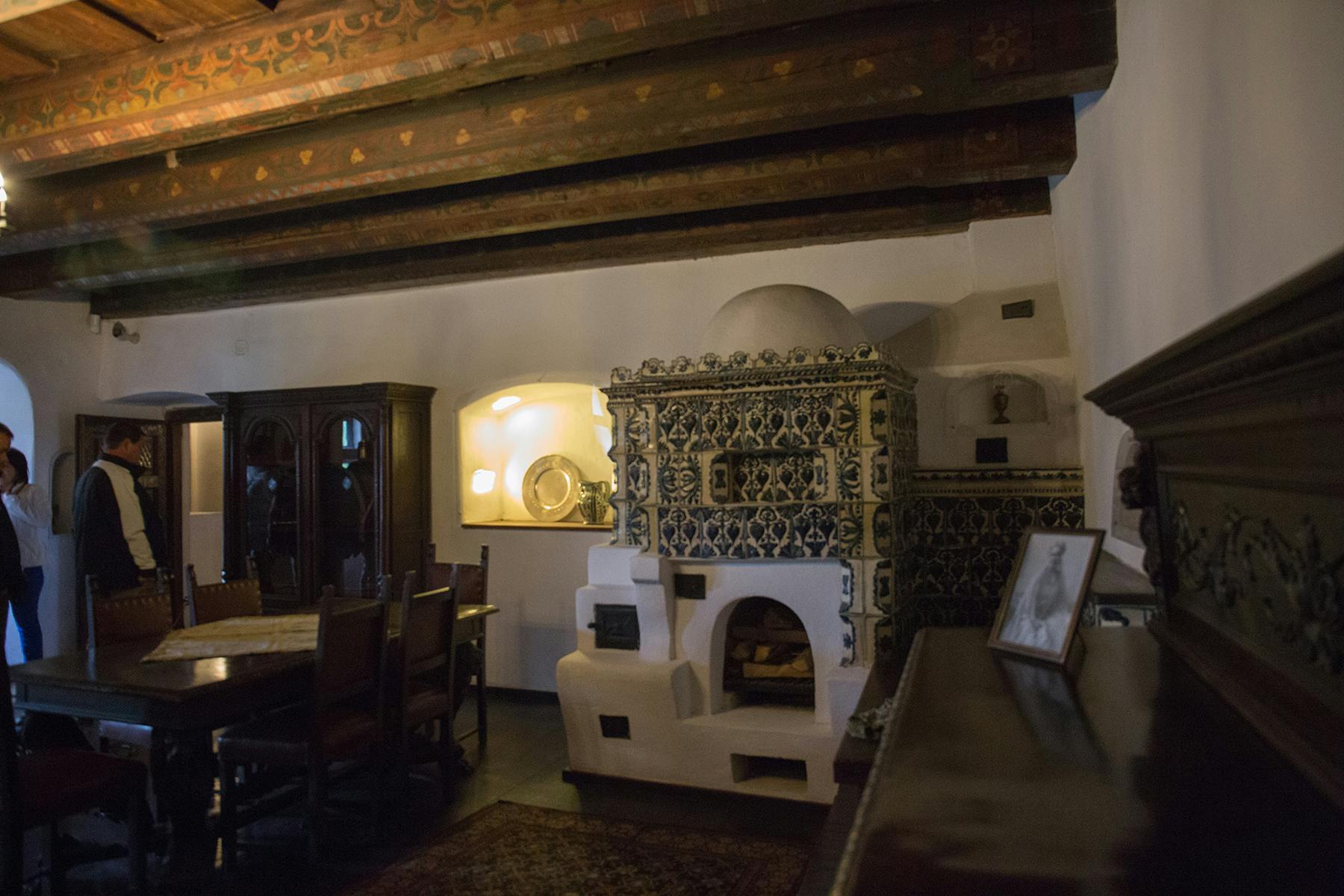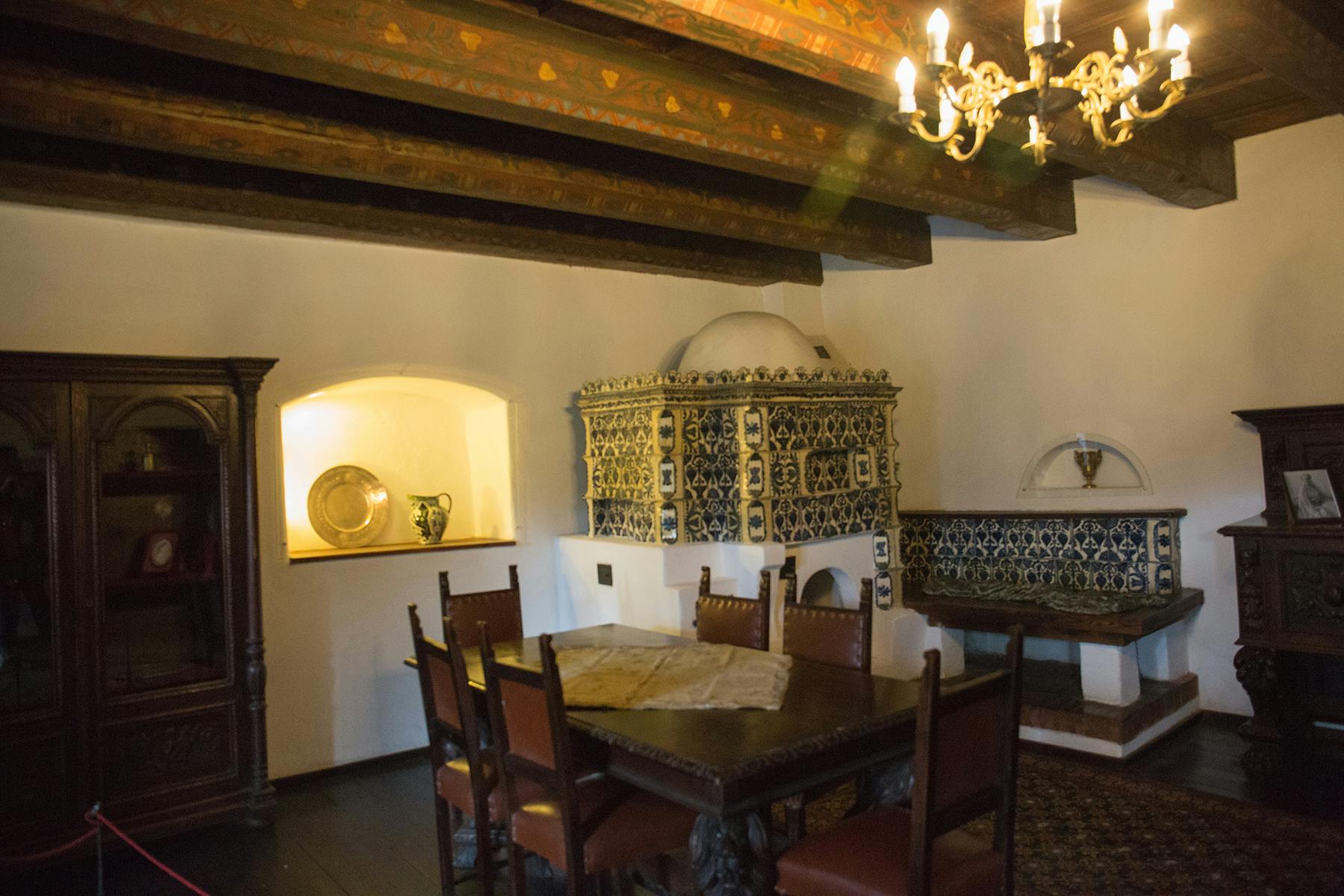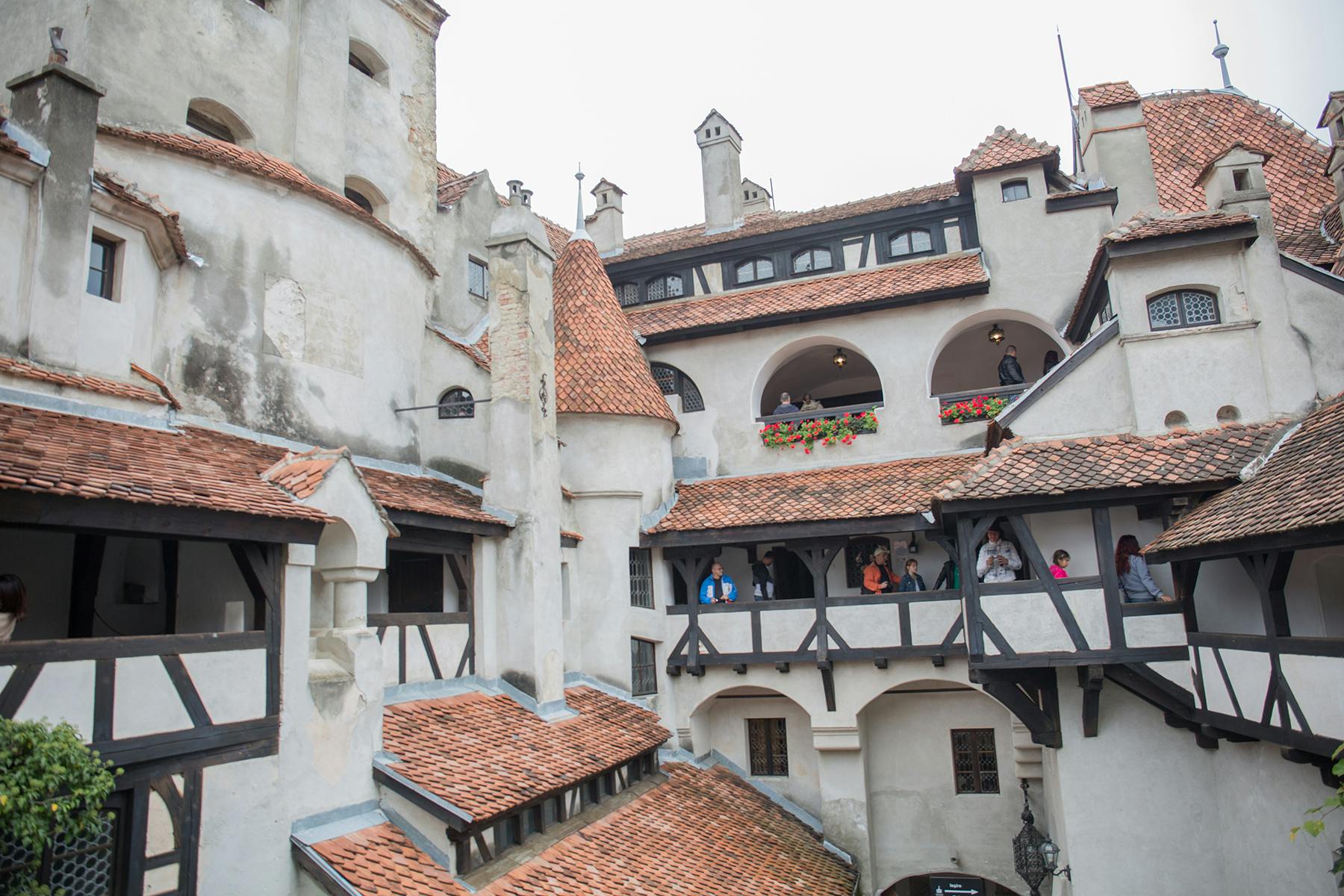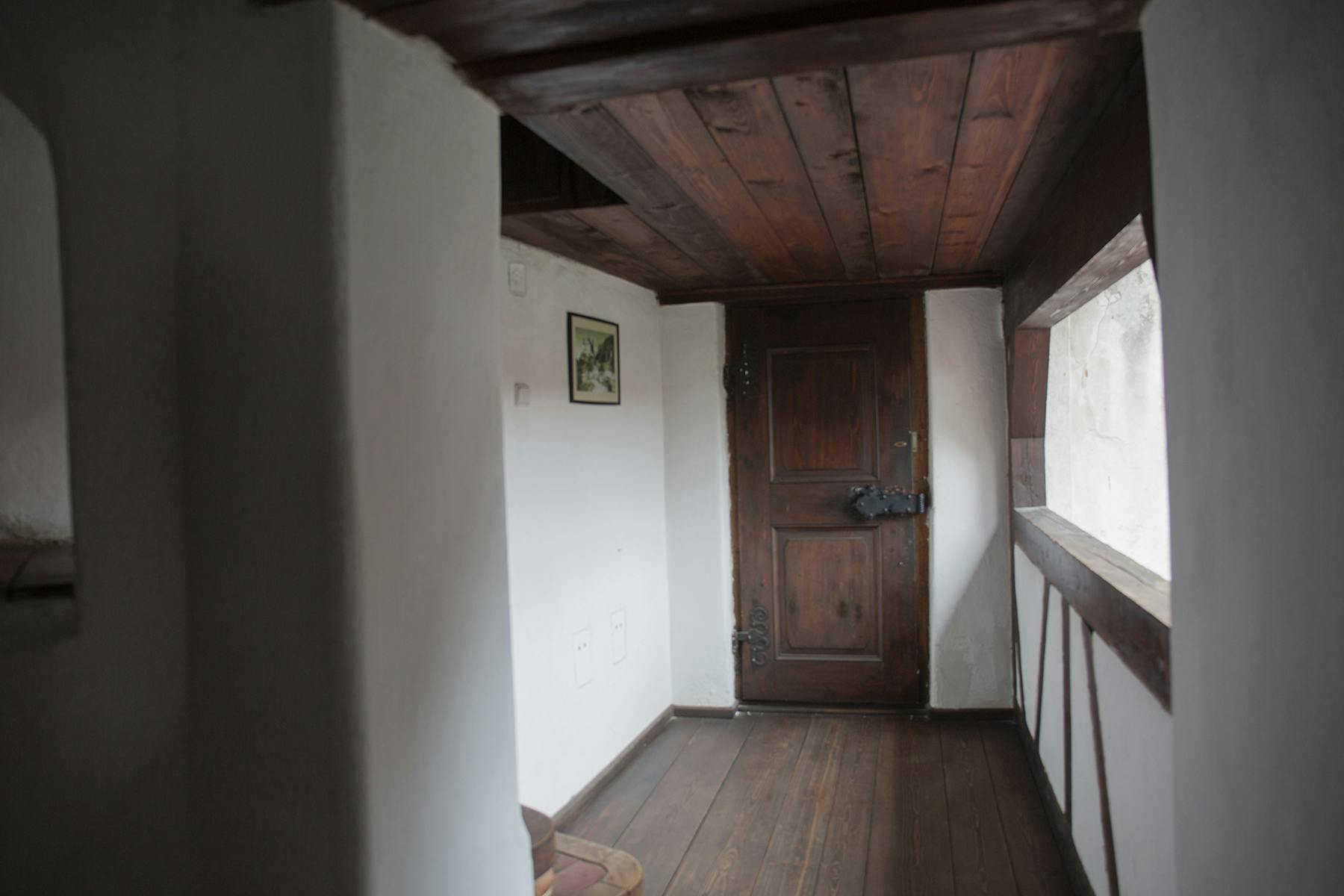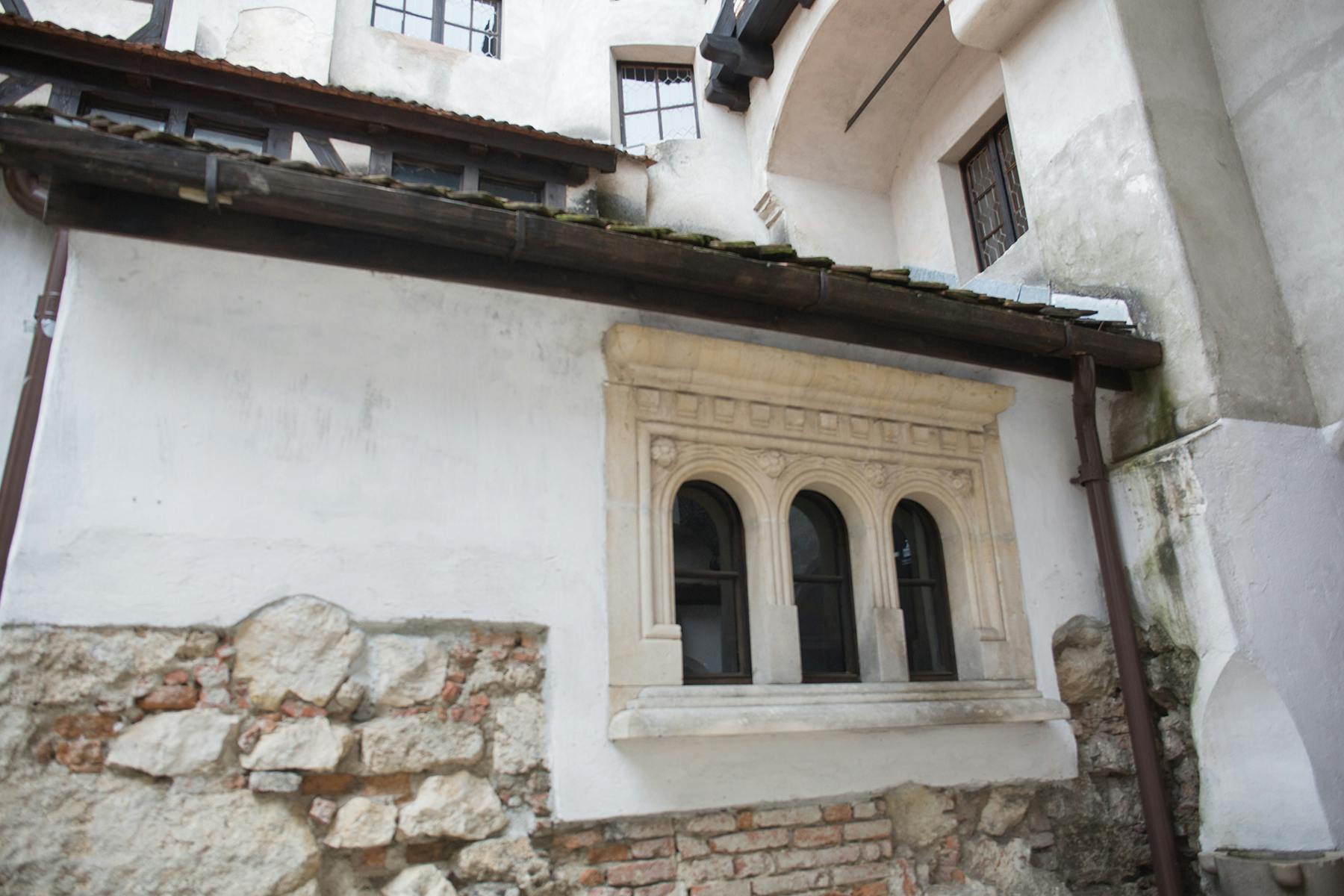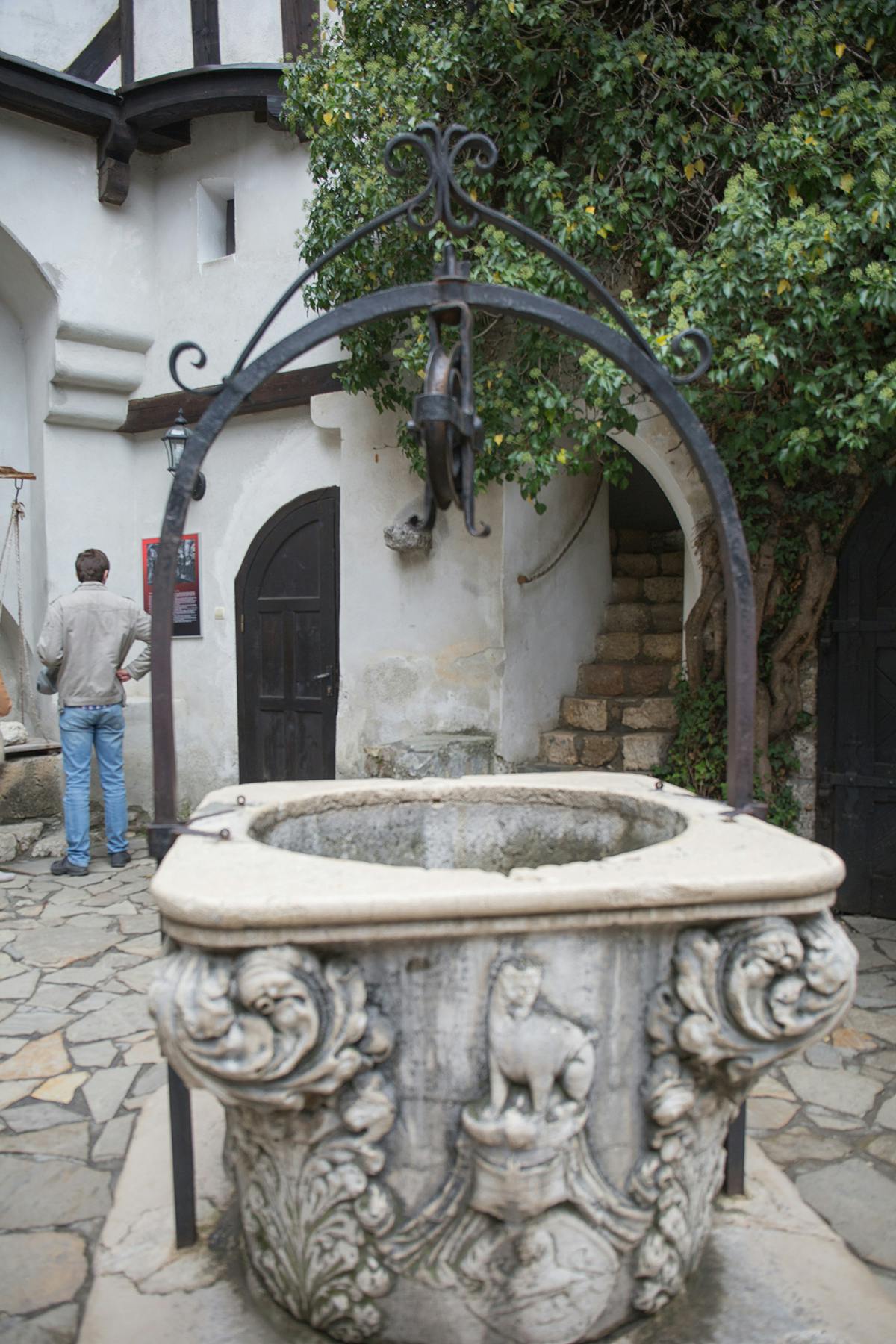In the center of Romania, deep within the mountains of Transylvania, looms Bran Castle.
The castle itself has been around for over 600 years, having been fully completed in 1388. But it wasn’t until 1897 that Irish author Bram Stoker forever made this Transylvanian fortress synonymous with the vampiric monster Dracula. Transylvania enraptured Stoker, as did its contentious mid-15th century leader Vlad III, Prince of Wallachia—better known as Vlad the Impaler. Surprisingly, Stoker never once visited Romania, instead piecing together his description of Dracula’s castle from various textbook representations.
Bran Castle is generally regarded as the place Dracula would’ve lived had he been real. Its regal exterior at once welcoming and ominous.
The stone castle overlooks new buildings as well as ruins, a small pond, and a cobblestone pathway that’s lined with wooden stalls that are filled with Vlad the Impaler keychains and “Drunkula” T-shirts, along with traditional Romanian embroidery and wooden masks. The sale of everything from culturally significant artifacts to throwaway tchotchkes illustrates the fact that the castle and its accompanying fortress are a tourist attraction that cater to history buffs and casual travelers alike. Many come for the spooky appeal of Bran Castle and its ties to Vlad the Impaler. Even more come to pay tribute to the mythos of Dracula.
The Romanian word “dracul” has been taken to mean either “devil” or “dragon” and, while the former certainly attaches a more sinister meaning, the latter is far more likely to have been its intended meaning. Vlad III came from the Order of the Dragon, a shadowy noble group that gained notoriety during the crusades. Stoker’s villain was similarly aristocratic, at once sophisticated and genial to all who passed through the doors of his crumbling castle in an effort to manipulate them into submission. Dracula’s infiltration of London is similar to Vlad’s own undercover plot to destroy the Ottomans while posing as a Turkish cavalry corpsman in 1462. Dracula and the brutal lord who inspired him share a sinister penchant for destroying people from the inside out.
Cream-colored walls, exposed beams, and dark wooden floors make Bran Castle appear less ominous and more minimalistic, bordering on utilitarian. There are minor touches of ornamentation, however. Many of the beams have intricate wood carvings while ornate metal chandeliers loom above. The chandeliers’ angular designs with spikes and cages stand as the closest thing to devices of torture you see on a tour of the premises, until you hit the actual medieval torture museum tucked away in a dark, multi-leveled corner of the castle. Both Vlad and Dracula likely would’ve loved the wide array of instruments of pain, including guillotines and vices meant to constrict the cranium itself. Most of the macabre artifacts are recreations rather than originals.
What’s been primarily preserved and presented within the walls of the ancient structure is the castle’s distinction as a royal residence during the 1920s and up until 1932, when it last served as a summer residence for Queen Maria of Romania. The Bran Castle we see today isn’t the same one that Vlad the Impaler occasionally called home during his reign in Wallachia. Maria enlisted the help of famed architect Karel Liman, who designed the nearby Peles Castle in Sinaia, to spruce up the dour fortress. All of the window carvings and spiral staircases were Maria’s doing by way of Liman’s execution.
They appear fairly anachronistic given Bran Castle’s intended purpose during the time of Vlad’s reign. Initially used as a customs building to generate more income in the area, Bran Castle served as one of the most important lookout points for residents to prepare for battle against the perpetually invading Ottomans, who still had quite the bone to pick with Vlad and his ilk. Its interior courtyard provided somewhat a safe haven for those tasked with attacking approaching armies from above.
Looking down from the main tower to the central well and copious red flowers, you’d be hard-pressed to find a more romantic location. Weddings and important events are frequently held at the castle despite its history of bloodshed. At the same spot where couples have walked down the aisle, so too have the Ottomans been slaughtered by residents of Bran. Naturally, some of the creepier sections of the castle happen to be those with the least amount of polish, including a secret staircase passageway—undoubtedly pivotal in wartime—as well as the castle dungeon.
The most heavy-handed showing of Dracula’s impact on Bran Castle can be seen in the gift shop. It’s been documented in both academia and among fans that both Dracula and Vlad the Impaler were pretty big narcissists. They would be absolutely tickled to see their likenesses slapped on wine bottle labels, magnets, and T-shirts. To have such an enduring legacy, especially with such a nefarious reputation, is a cunning trick indeed.
Photo by April Siese
Want more DotGeek? Check out Daily Dot Video!

